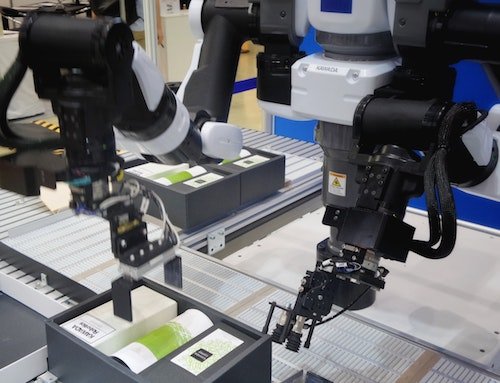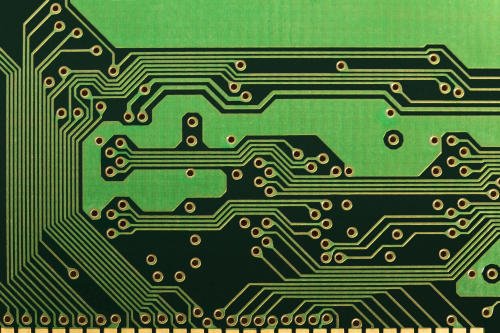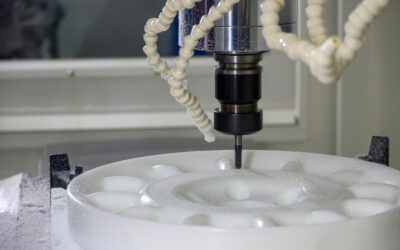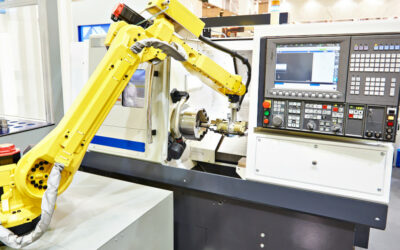The robotics and automation industries have grown massively in the last decade. The global robotics technology market was valued at $62.75 billion in 2019 alone and is projected to surpass $189.36 billion by 2027. One of the major factors contributing to the success of the robotics industry today is the incorporation of new manufacturing technologies like CNC machining.
Computer numerical control (CNC) machining is a manufacturing technology that relies on computer instructions to interpret and convert 3D CAD designs into machined parts. Their high accuracy, precision, and several other advantages make them one of today’s most in-demand manufacturing technologies.
This article will look at how companies in the robotics and automation industries use CNC machines. We will also cover what gives CNC machines advantages over conventional manufacturing technologies in the robotics industry.
CNC Robotics Machining: The Overlap and Benefits
Robotics machining and CNC machining often overlap: CNC machines’ operations are based on implementing computer code and control technologies (computer numerical control technology). And at the same time, the robotics and automation industries benefit from CNC machining.
CNC machines are accurate and precise, achieving tolerances as tight as 4μm. This capability makes them instrumental in the robotics industry, which has stringent requirements for the accuracy and precision of machined parts. In addition, CNC machining offers short lead times, allowing you to create a final part in a matter of hours, whereas conventional machining might take days (sometimes weeks) to complete.
Let’s dig deep into some of the robotic parts you can manufacture using CNC machines.
4 Key Robotic Parts Made With CNC Machining
#1 Robotic Arm
Robotic arms are a crucial part of devices that behave like the human hand and help move or perform operations on objects. Although initially developed for automated die casting, robotic arms are now found in several devices, including CNC machines, material handling devices, and pick and place machines, to name a few.
Because manufacturers primarily use robotic arms to move objects, their components contain high-strength materials like steel, aluminum, and certain plastics. CNC machines’ compatibility with a broad range of materials makes them ideal for machining these parts.
Besides, the subtractive nature of CNC machining means you can fabricate plastic components without compromising on the part’s structural integrity (this is not the case with additive manufacturing processes like 3D printing).
Learn more about CNC Machining vs. 3D Printing
#2 End Effectors
An end effector is a device that attaches to the end of a robotic arm, allowing the robot to interact with objects and perform different tasks. These end effectors vary in design and function: grabbers, grippers, or even suction pumps. However, one thing they have in common is that they are usually fabricated using CNC machines.
Product designers design “end effectors” to have different surface roughnesses depending on the functional requirement. For example, CNC machines can create parts to a surface roughness of about Ra 0.8μm, making them ideal for creating end effectors with excellent surface finish.
#3 Custom Jigs and Fixtures
Custom jigs and fixtures play an essential role in most robot operations: they help hold parts in place (or locate parts in space) while the robots work on them. As their name implies, custom jigs and fixtures are custom parts, and there is no machining technology as cost-effective as CNC machining for fabricating custom parts.
Related Post: Custom Machining: When Should You Use it, and What are the Advantages?
#4 Sensors and Controllers
Printed circuit boards (PCBs) are key components in the sensors and controllers that make up many robots and automation devices. Although chemical etching takes center stage for PCB manufacturing, CNC machining is helping to eliminate some challenges associated with this process.
The chemical etching process uses ferritic chlorideㅡa harmful substance that causes skin irritation, increases iron build-up in the body, and requires extensive waste disposal processes. CNC is now being used as an alternative to chemical etching.
Learn more about the ways CNC machining is used in the electronics industry.
CNC Machining Robotic and Automation Parts: Gensun Can Help
Now that you understand at least something about CNC machining, you’d agree that CNC machines are top-of-the-line technologies for fabricating parts. But CNC machining is only as good as the machine shop or operator using the manufacturing device. Therefore, you want to work with a manufacturer with highly qualified CNC machine operators, engineers, and technicians.
Gensun Precision Machining is a leading provider of CNC machining services across Asia. Not only do we have the most recent CNC machining technologies, but we also have highly qualified engineers and operators capable of creating your robotic and automation products accurately and cost-effectively.
We have completed over 100,000 projects with customers that serve a broad range of industries, including robotics and automation.
Learn more about our CNC machining services.






